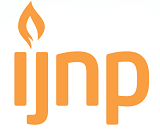Nurse’ Knowledge and Their Performance on Cardiopulmonary Resucitation (CPR) in Critical and Emergency Care Unit
Abstract
Background: Knowing the important relation between knowledge and skill is important because it reflexes the action that nurses do to save people life.
Objective: This research aimed to determine the relationship between the nurse's knowledge level and their performance on cardiopulmonary resuscitation in critical and emergency care unit.
Method: The study was quantitative descriptive with the cross-sectional design used sequential sampling with 30 nurses in critical and emergency care unit. The data were analyzed using the Fisher Exact Test. Data was taken from questioner and observational assessment using a standard operating procedure which was developed by a hospital.
Results: The results of this study found that there were 63.3% respondents which all of them had poor knowledge also poor performance on doing cardiopulmonary resuscitation.
Conclusion: There is a relation between nurse’s knowledge level and the nurse’s performance on undertaking cardiopulmonary resuscitation. The more knowledge they have the better performance they have on cardiopulmonary resuscitation. Routine training and evaluation may be useful to increase nurses’ knowledge and skills.
Keywords
Full Text:
PDFReferences
Abdul, Halim. Rottie, Julia. Karundeng, Michael Y. 2016. Analisis Perbedaan Response Time Perawat Terhadap Pelayanan Gawat Darurat di Unit Gawat Darurat di RSU GMIM Pancaran Kasih dan di RSU TK.III Robert Wolter MonginsidiKota Manado. Universitas Sam Ratulangi
AHA. (2010). Guidelines CPR ECC 2010 17-07-2018, from http://www.heart.org/idc/groups/heart-public/@wcm/@ecc/documents/downloadable/ucm_317350.pdf
AHA. (2005c). Highlights of the 2005 American Heart Association Guidelines for Cardiopulmonary Resuscitation and Emergency Cardiovascular Care. Currents in Emergency Cardiovascular Care, 16(4), 1-28. PubMed.Gov
Alspach, G. (2005). CPR: The vanishing competency. Critical Care Nurse, 25(6), 8-12. Critical Nurse Care.
Hazinki, Mary Fran & Others. (2015). Fokus Utama: Pembaruan Pedoman American Heart Association 2015 Untuk CPR dan ECC. Retrieved from https://eccguidelines.heart.org/wp-content/uploads/2015/10/2015-AHA-Guidelines-Highlights-Indonesian.pdf
Bastable, S. B.(2002). Perawat Sebagai Pendidik. Jakarta: Penerbit Buku Kedokteran EGC
Indonesia Health Minister. 2017. InfoDatin: Information and Data Center of Indonesia Health Minister. Jakarta
Hanafi, A. (2007). Peran Ruangan Perawat ICU Dalam Memberikan Pelayanan Kesehatan di Rumah Sakit. Medan: USU
Hermawan, H. (2011). Hubungan Pengetahuan Perawat tentang Kegawatan Napas dengan Sikap Penanganan Gawat Napas pada Neonatus di Ruang Perawatan Intensif PKU Muhammadiyah Delanggu Klaten. Skripsi. Tidak dipublikasikan STIKES Surya Global Yogyakarta
Kuhnigh, H & Sefrin P. (2004). Skills and Self Assessment in Cardio-Pulmonary Resuscitation of the Hospital Nursing Staff.
Mayo Clinic. First aid Cardiopulmonary resuscitation (CPR): First aid. Retrieved from https://www.mayoclinic.org/first-aid/first-aid-cpr/basics/art-20056600.
Thamrin, S. (2010). Gambaran Pengetahuan Perawat dan Bidan tentang Resusitasi Jantung Paru pada Neonates di RSIA Siti Fatimah Makassar. Skripsi. Program Studi Ilmu Keperawatan Fakultas Kedokteran Universitas Hasanuddin Makassar
Wardani, Beni Mutiara. (2013). Pengaruh Kualitas Pelayanan Terhadap Kepuasan Pelanggan dari Sudut Pandang Pasien dan Pendamping Pasien. Universitas Katolik Indonesia Atma Jaya Jakarta
DOI: https://doi.org/10.18196/ijnp.3193
Refbacks
- There are currently no refbacks.

This work is licensed under a Creative Commons Attribution 4.0 International License.
IJNP (Indonesian Journal of Nursing Practices) are indexed by:
Office:
School of Nursing, Faculty of Medicine and Health Science, Universitas Muhammadiyah YogyakartaSiti Walidah Building F3, 4th floor.
JL. Brawijaya, Tamantirto, Kasihan, Bantul, Yogyakarta 55183
Email: IJNP@umy.ac.id
Web: http://journal.umy.ac.id/index.php/ijnp

Indonesian Journal of Nursing Practice is licensed under an Attribution 4.0 International (CC BY 4.0) license.



















.png)
